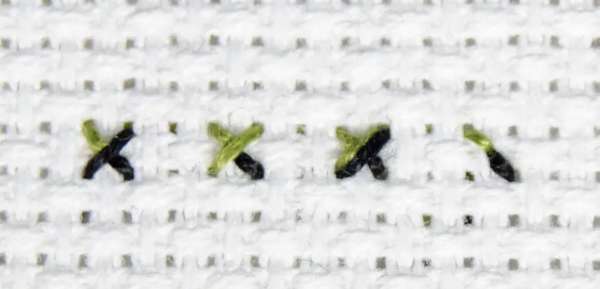 I have done a fair bit of smaller cross stitch pieces in my time (and I definitely have working something bigger as a goal for 2024!) but for the most part I’ve only worked projects with full cross stitches, backstitch and French knots. Of course I know other stitches aren’t necessarily harder, they just involve skills I haven’t actually tried yet.
I have done a fair bit of smaller cross stitch pieces in my time (and I definitely have working something bigger as a goal for 2024!) but for the most part I’ve only worked projects with full cross stitches, backstitch and French knots. Of course I know other stitches aren’t necessarily harder, they just involve skills I haven’t actually tried yet.
Last year I wrote a piece sharing information about partial stitches in cross stitch, what they look like in a chart, and how to work them.
Then I found this post all about quarter stitch from Sirious Stitches, which is worth a read as a deep dive into how quarter stitches work and how to make them.
As you might guess from the name, a quarter stitch looks like you have stitched one quarter of a full cross stitch. So instead of working the full x, you’re only working half of one side of the x.
To do this you have to make your own hole in the center of the square and then work from there to whatever hole you need to finish the stitch.
The post linked above shows how to work a single quarter stitch, as well as a three-quarter stitch (one leg is normal and one is made like the quarter stitch), as well as the double quarter stitch and double three-quarter stitch. There’s also an option to combine a three-quarter stitch and a quarter stitch where the quarter is worked in a different color from the three-quarter part.
It’s all a little mind-boggling, but the post has good examples of what these different options look like in a chart and in your stitching, and why different methods might be preferred in different situations. This is pretty high-level stuff, but if you ever need to know how to do it you’ll be glad these terms are familiar to you.
Do you work projects with partial stitches or do you stick to whole stitches? I’d love to hear your thoughts!
[Photo: Sirious Stitches]
